Source IGN – The results of the current inventory are taken from the last five forest inventory campaigns available (2015 to 2019)
Forest area
In mainland France, forests currently cover 16.9 million hectares, or 31% of the territory. It is the most important land use after agriculture, which covers more than half of mainland France.
Forest property
Three quarters of the French metropolitan forest (12.6 million hectares) belong to private owners. Public forests therefore represent a quarter of metropolitan forests. It is divided between state forests (state, 1.5 million hectares), and other public forests (2.7 million hectares), mainly communal forests.
Wood stock in the forest
The volume of standing timber in the French metropolitan forest is 2.8 billion m3. The average volume per hectare is 173 m3.
The private forest comprises 72% of the volume of standing timber. Volumes per hectare are higher in public forests (198 m3 / ha).
With nearly 1.8 billion cubic meters, hardwoods represent almost two-thirds (64%) of the standing volume.
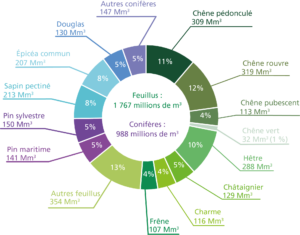
Oaks (pedunculate, sessile, pubescent and green) are the hardwood species most represented in the metropolitan area (44% of the volume of hardwoods).
Conifers form nearly a billion cubic meters. Common spruce and silver fir together account for 42% of the volume of conifers.
The diversity of forest stands
The French metropolitan forest is mainly a deciduous forest, the stands of which represent 67% of the forest area (9.9 million hectares).
The national forest inventory lists more than 190 different tree species, including 142 hardwood species. Their geographical distribution brings regional diversity to the metropolitan territory.
The French forest is divided into two almost equal parts between pure stands (7.3 million hectares) and mixed stands (7.5 million hectares).
Among the mixed stands, those with two predominant species represent one third of the stands, while those with three or more species represent 18%.
The forests of northeastern France and the Massif Central are the most diverse. In contrast, the Landes massif is a large massif of pure stands of maritime pine.
Detailed list of species present in France with the IUCN evaluation criteria
Source: data provided by Bernard Michaud which has been compared with data from the red list of vascular flora in mainland France (to be downloaded below) :Note: this list is not exhaustive, it lists trees and shrubs that may be of interest for violin making, archery or similar uses. It will be necessary to complete it and add information related to the distribution area of each species and to detail more precisely for which family of instruments and parts of instruments these woods are best suited.Caption: Species threatened with extinction in mainland France:
- CR: critically endangered
- EN: in danger
- VU: vulnerable
- NT: Near threatened (species close to the threshold of threatened species or which could be threatened if specific conservation measures were not taken)
- LC: Least concern (species for which the risk of extinction from mainland France is low)
- DD: Insufficient data (species for which the assessment could not be carried out for lack of sufficient data)
- NA: Not applicable (species not subject to assessment because (a) introduced after the year 1500 or (b) present in mainland France occasionally or marginally)
- NE: Not assessed (species not yet confronted with the criteria of the European Red List)
Learn more about the IUCN Red List and its assessment criteria
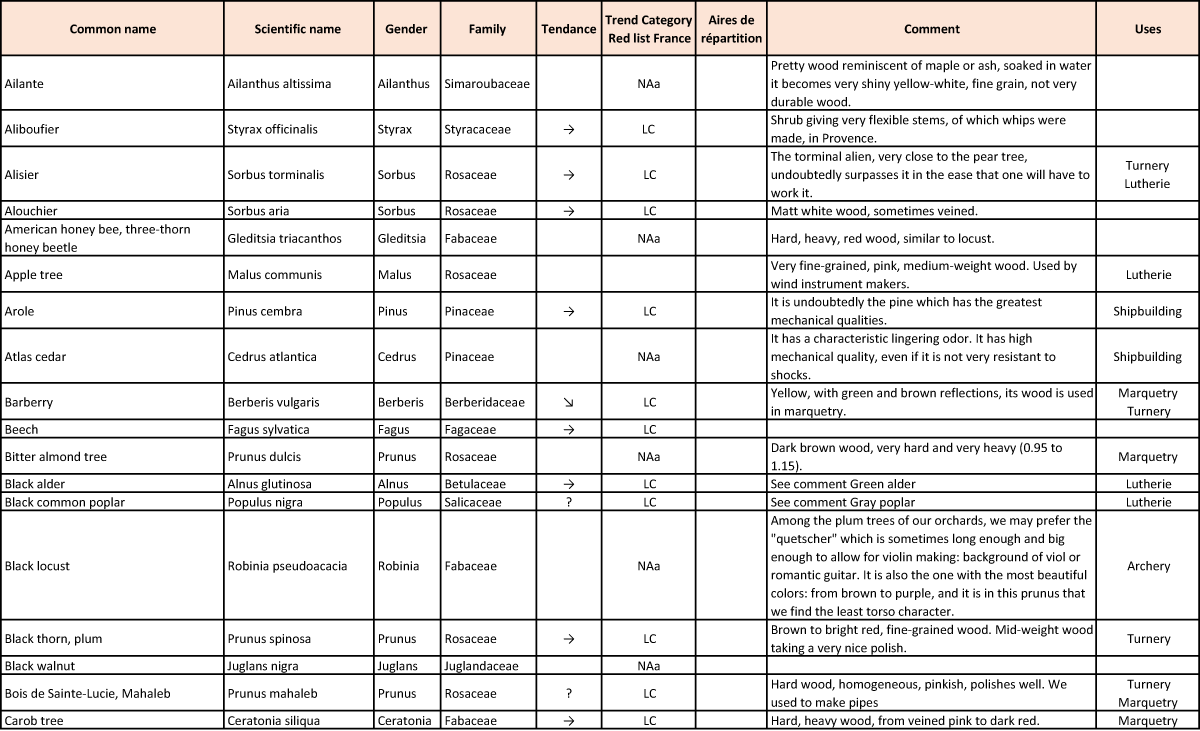
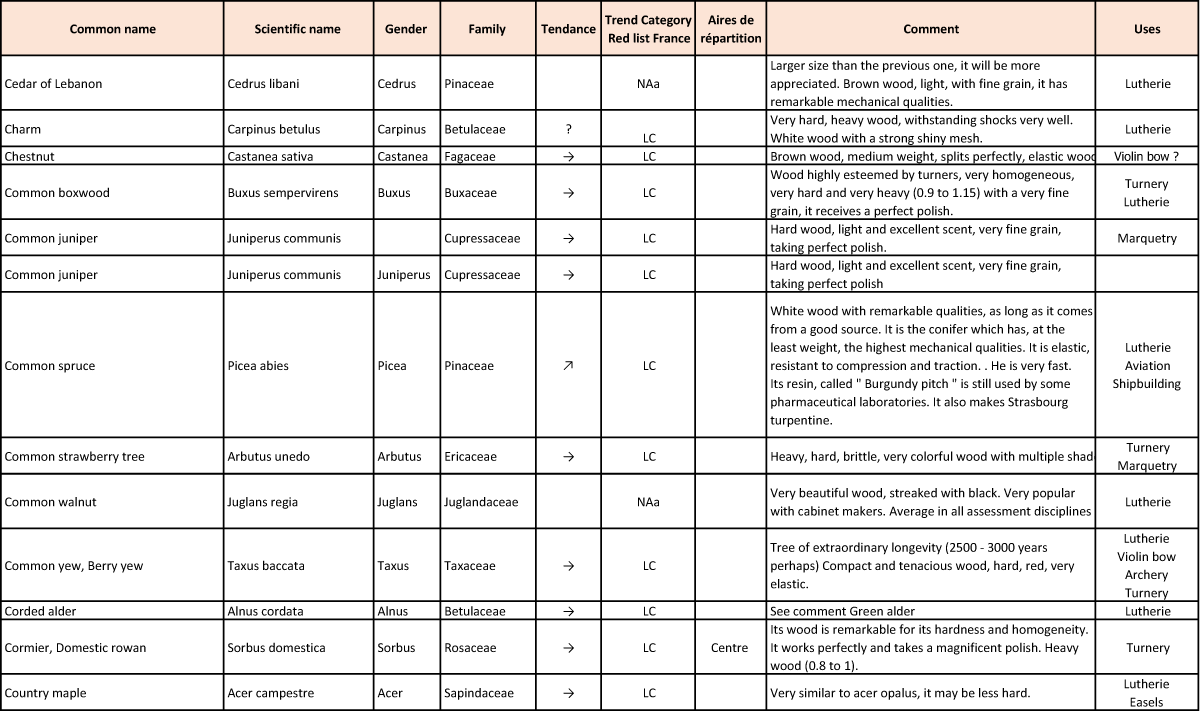
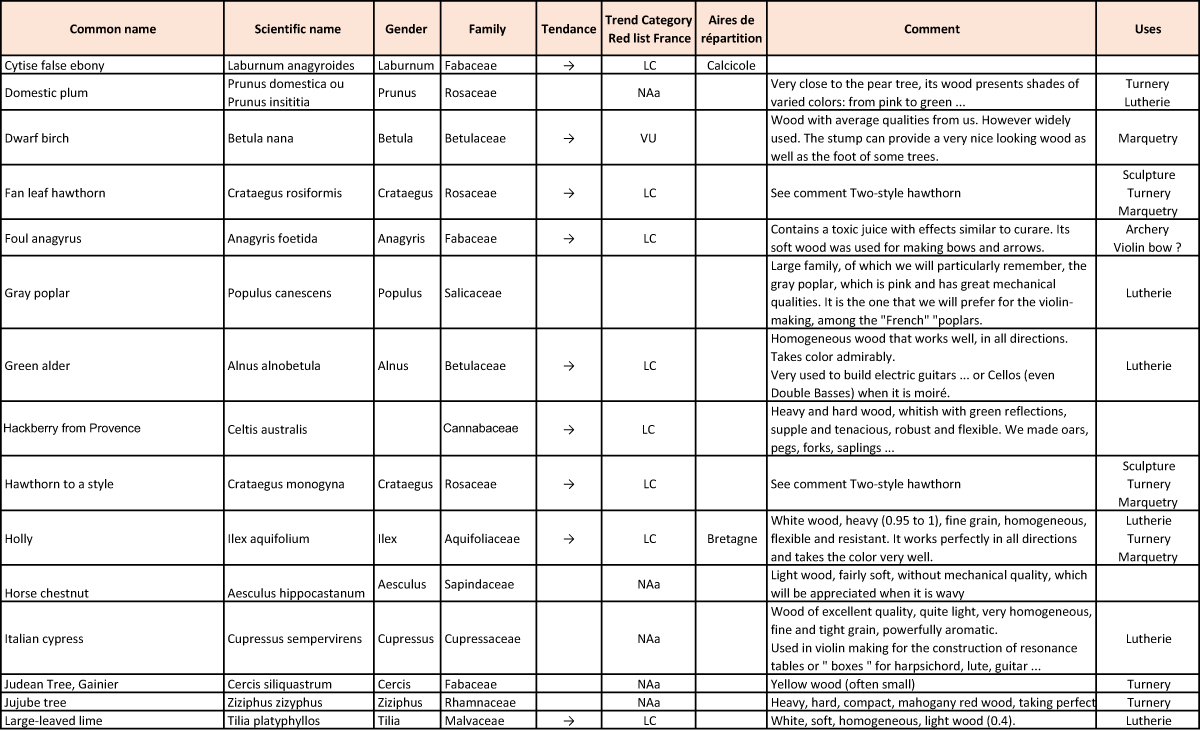
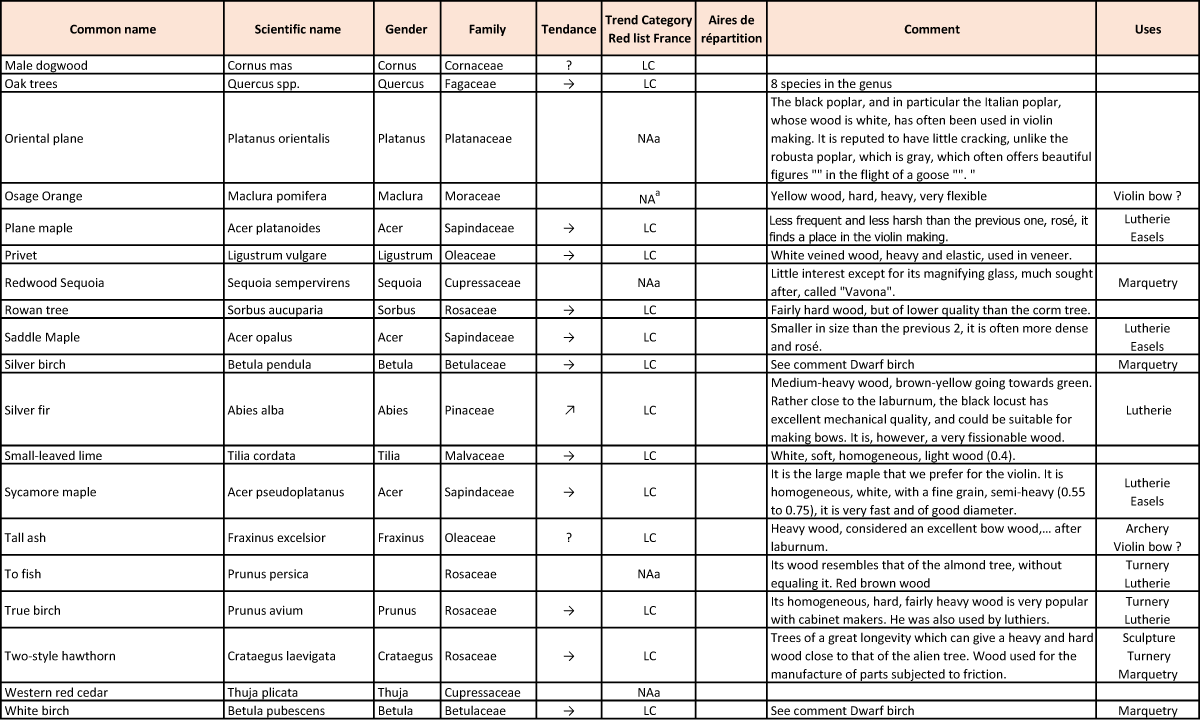

Distribution of main forest species
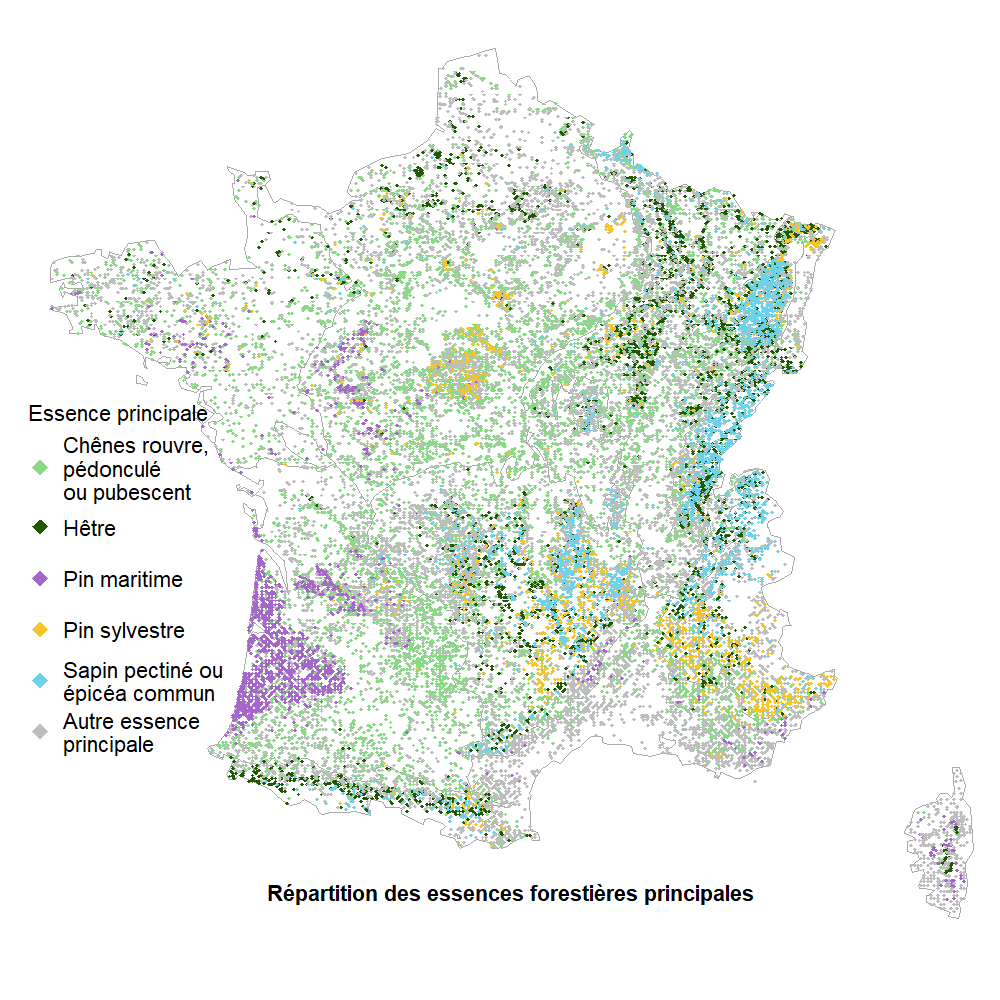
Source IGN
Download the red list of vascular flora in metropolitan France



